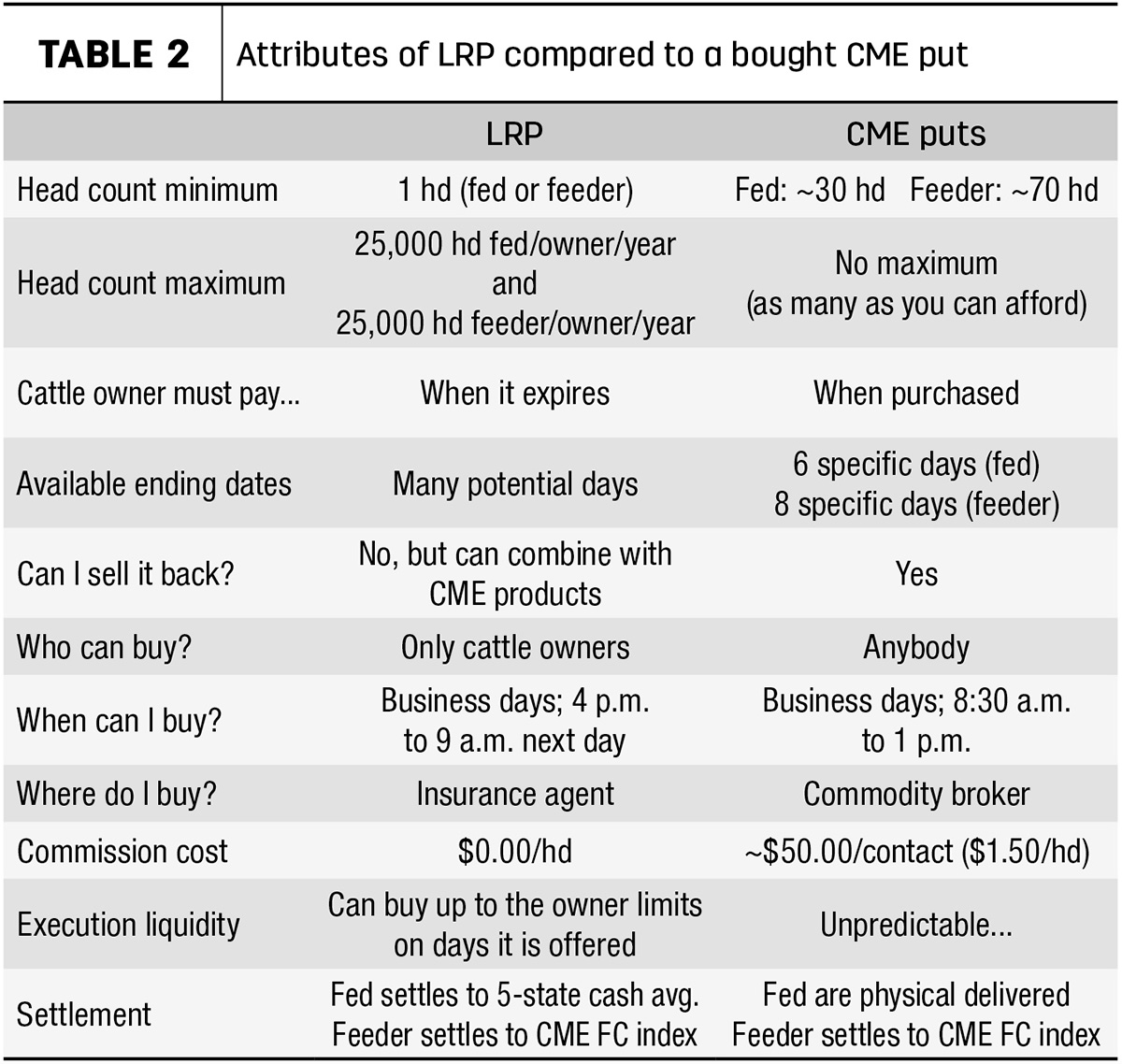Expert Guidance: Bagley Risk Management Techniques
Expert Guidance: Bagley Risk Management Techniques
Blog Article
Trick Factors to Consider When Deciding On Animals Risk Security (LRP) Insurance Policy
When evaluating alternatives for Livestock Threat Protection (LRP) insurance policy, a number of vital factors necessitate mindful consideration to ensure effective risk management in the farming field. Selecting the appropriate insurance coverage alternatives customized to your specific livestock procedure is critical, as is understanding just how premium prices associate with the level of protection offered.
Coverage Options
When taking into consideration Livestock Risk Security (LRP) insurance policy, it is important to comprehend the various protection choices offered to mitigate threats in the farming market. Animals Risk Protection (LRP) insurance coverage offers different insurance coverage alternatives tailored to meet the varied demands of livestock producers.
One more vital coverage alternative is the endorsement duration, which determines the size of time the insurance coverage holds. Producers can choose the endorsement period that ideal fits their production cycle and market conditions. In addition, coverage levels and rates vary based upon the type of animals being insured, giving producers the adaptability to personalize their insurance coverage intends according to their certain needs.
Recognizing the different coverage choices offered under Animals Risk Protection (LRP) insurance coverage is essential for manufacturers to make informed decisions that successfully safeguard their livestock procedures from market uncertainties.
Costs Expenses

Animals Danger Defense (LRP) insurance policy gives essential insurance coverage options customized to mitigate dangers in the agricultural field, with a substantial facet to think about being the calculation and structure of premium expenses. These include the type and number of livestock being insured, the coverage level picked, the existing market rates, historic cost data, and the length of the protection duration.
Premium expenses for LRP insurance coverage are normally determined based upon actuarial information and risk assessment models. Insurance firms evaluate historic data on animals prices and production expenses to figure out a proper premium that mirrors the level of threat entailed. It is necessary for livestock producers to meticulously examine premium prices and protection alternatives to ensure they are appropriately protected against prospective economic losses because of negative market conditions or unexpected events. By comprehending how premium costs are calculated and structured, producers can make enlightened choices when picking the appropriate LRP insurance coverage for their procedure.
Qualified Livestock
The resolution of eligible animals for Livestock Danger Security (LRP) insurance protection involves careful consideration of particular requirements and characteristics. Livestock types that are normally eligible for LRP insurance coverage include feeder livestock, fed swine, lambs, and cattle.
Feeder livestock, for instance, are frequently eligible for LRP protection if they drop within specified weight arrays. Fed cattle may also be qualified, however they should meet specific weight and quality grade demands. Swine eligible for coverage typically include market weight animals intended for massacre. Lambs are an additional group of animals that can be thought about for LRP insurance, with elements such as weight and age playing an essential function in identifying their qualification.
Prior to picking LRP insurance policy for livestock, manufacturers should very carefully assess the eligibility criteria laid out by the insurance policy supplier to ensure their pets fulfill the needed needs for insurance coverage.
Policy Versatility
Policy adaptability in Livestock Risk Security (LRP) insurance coverage allows manufacturers to tailor insurance coverage to suit their details needs and run the risk of administration strategies. This adaptability empowers animals manufacturers to personalize their insurance coverage policies based on elements such as the kind of livestock they have, market conditions, and private risk resistance levels. By providing adjustable choices, LRP Homepage insurance policy enables producers to successfully handle their threat direct exposure while protecting their livestock procedures against unanticipated market volatility.
Insurance Claims Process
Upon experiencing a loss or damages, manufacturers can launch the claims procedure for their Livestock Threat Security (LRP) insurance by immediately calling their insurance policy company. It is vital for producers to report the loss immediately to speed up the insurance claims process. When connecting to the insurance policy company, producers will certainly require to provide thorough details concerning the incident, consisting of the day, nature of the loss, and any kind of relevant documents such as veterinary documents or market value.

After the evaluation is complete, the insurance coverage copyright will certainly make a decision relating to the claim and communicate the outcome to the manufacturer. If the case is accepted, the manufacturer will obtain payment according to the regards to their Animals Risk Defense (LRP) insurance coverage. Bagley Risk Management. It is necessary for manufacturers to be accustomed to the claims process to make certain a smooth experience in case of a loss

Final Thought
In final thought, when selecting Livestock Danger Defense (LRP) insurance, it is crucial to take into consideration insurance coverage options, premium expenses, qualified livestock, policy adaptability, and the insurance claims process. These vital factors will aid guarantee that herdsmans and farmers are have a peek at this website sufficiently secured versus potential dangers and losses related to their livestock procedures. Making an informed decision based upon these considerations can ultimately bring about much better economic safety and comfort for animals producers.
Livestock Danger Protection (LRP) insurance provides various protection choices tailored to fulfill the varied requirements of livestock producers.The resolution of eligible livestock for Livestock Threat Security (LRP) insurance coverage involves cautious factor to consider of details criteria and features.Policy adaptability in Livestock Danger Protection (LRP) insurance enables manufacturers to customize insurance coverage to match their click to investigate specific requirements and run the risk of monitoring techniques.Upon experiencing a loss or damage, manufacturers can start the cases process for their Livestock Threat Protection (LRP) insurance coverage by quickly calling their insurance coverage company.In final thought, when selecting Animals Threat Protection (LRP) insurance policy, it is crucial to think about insurance coverage alternatives, premium costs, eligible animals, policy adaptability, and the claims process.
Report this page